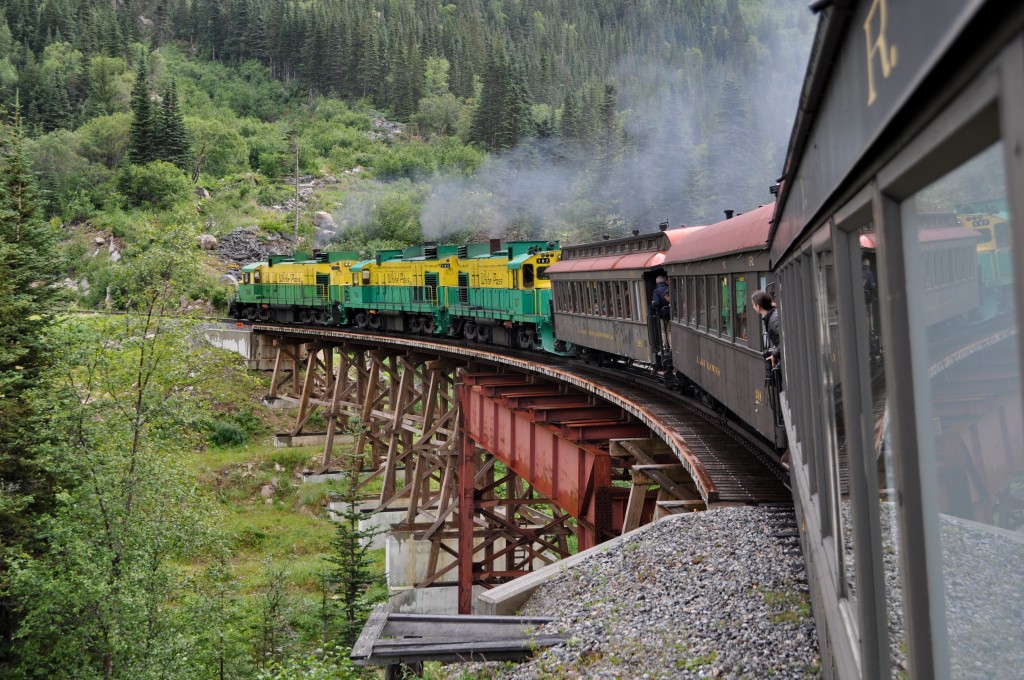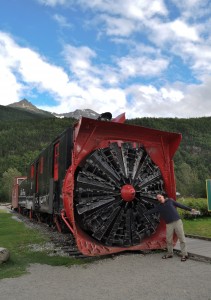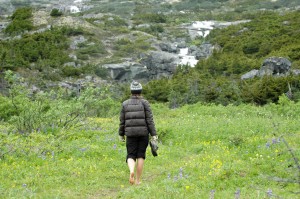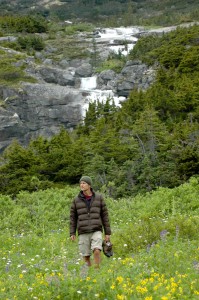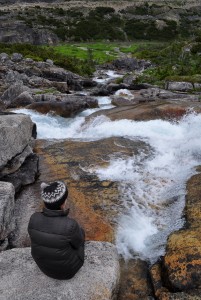A hundred years ago, there were lots of ways to die in Skagway. You could freeze to death, die of starvation, get buried in an avalanche, someone could shoot you, you could drown, get hit by a falling rock, or your horse could fall into a canyon, to name a few.
In the late 1800s, word got out that there was gold in them thar hills, and prospectors came from all over the world to gamble their lives trying to strike it rich in the headwaters of the Yukon River. To get there, many of them came through Skagway. Of course almost none of them had any experience in mining for gold, never mind the incredibly difficult challenges of hauling the required 2,000 pounds of supplies over the mountains or surviving a winter in northern Canada. To add icing on the misery cake, most of the best claims had already been staked long before the gold rushers even arrived.
Today, Skagway is home to a new kind of gold rush: cruise ship tourism. The quaint little shops and boardwalk sidewalks are now a scrum of jewelry stores, fur shops and the kind of luxury outlets meant to hook a few of the 10,000 passengers that flood the streets whenever three ships are in town on the same day.
The gold rush history is still amply evident (as in the scenic White Pass train ride that follows one of the old miner’s route) but the “I can do anything, and no one’s gonna tell me I can’t” spirit that once drove the miners to the Klondike has long since evaporated in favor of a sanitized version of Alaska.
So it was with great joy, that we found ourselves on a little hike along International Falls a short drive from Skagway (named for the fact that it flows on the border between the US and Canada). Here we rediscover a slice of what makes this land great – vast open space, abject beauty and no one telling you what to do.
On the footpath there are plenty of ways to die: we could get eaten by a grizzly, slip on a rock, get swept away by the river and drown. And something about that danger makes us feel reconnected to the miners of the past. There are no cruise ship directors telling us to be careful looking over the edge, no rushing back to make our departure time, and absolutely no one saying, “don’t go there.”
This part of the world is big and open and generally void of humans. It reconnects us to that rebellious, independent spirit that drove prospectors to leave their safe jobs and travel across the country in search of gold. It’s that spirit we think we still retain as a nation, but that which has become largely sanitized by the seductions of comfort and owning things.
At last, after six days on the road, we finally scrape the surface of the real Alaska.
